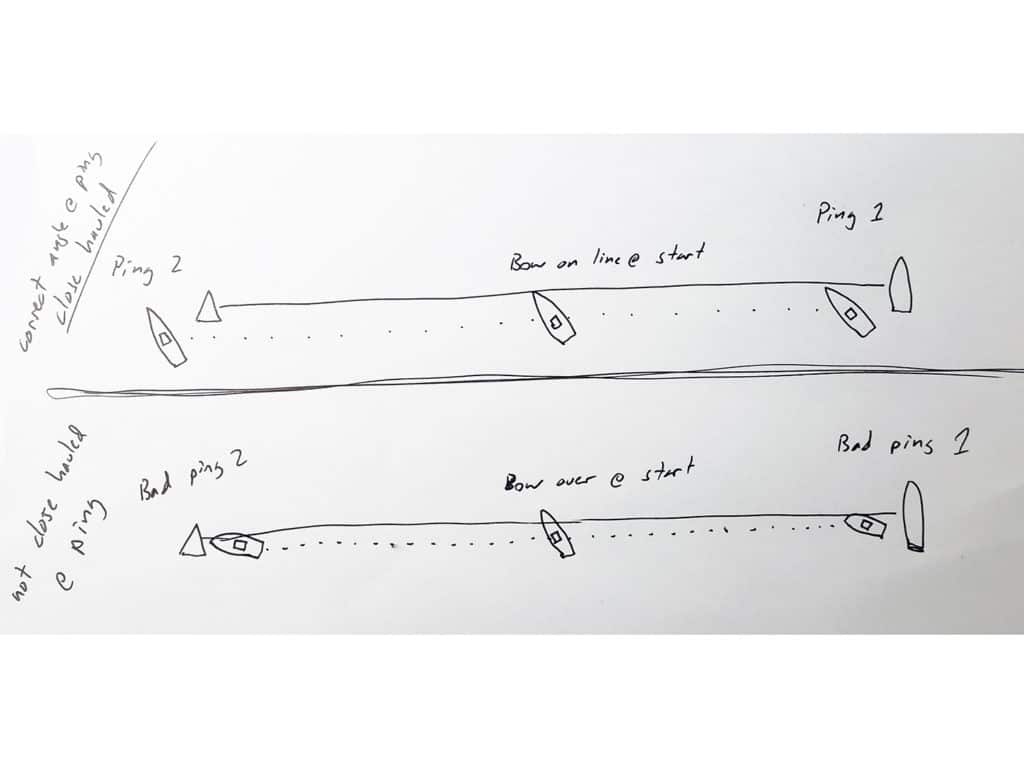
When it comes to pinging the starting line, the biggest mistake you can make is not being closehauled when pinging. If you are beam reaching on the line and the unit is on the line, the unit draws the imaginary line on the actual line. However, when you are starting, your bow is well in front of your physical unit and so you would be over early. On our J/70, we work very hard to be closehauled, which means the unit is drawing its imaginary line 7 feet back from the actual start line. Then when we start, at zero meters, our unit is 7 feet off the line but the bow is right on the line.
For this reason, it’s also important to be on starboard when pinging. This is especially true if one end of the starting line is biased by more then a few degrees. Pinging outside the line at either end is just fine and perhaps more accurate if your goal is to win an end. Another reason to be on starboard is that when pinging, the ends are often crowded and at least you have right away over someone coming in on port and disrupts your ping. To improve accuracy further, I often go to the bow of the boat (yes, even on the J/70) and call the ping very accurately from there.
Anything you can do to let the GPS catch up with reality is beneficial, so in addition to being closehauled, it’s helpful to come in medium speed and not turn too much. I like medium speed because that is likely your speed 10 to 15 seconds before the gun when you need the distance to be most accurate.
RELATED: Start Before the Start
After you finish a race, hang near the committee boat until the last boat finishes. Ping the boat ASAP and then run the line to the pin and do it again. Keep an eye on the ends of the line to make sure the committee isn’t moving them. Remember, race committee boats and marks are always moving a little due to wind, waves and current. In addition, a GPS is really only good within a meter or two. Remember to not only use your pinging device, but also look around outside the boat to make sure your distance to the line displayed matches what you see. A bad ping or a drifting boat or mark is not an excuse for being over early.
Top Principal Race Officer Bruce Golison says, don’t be afraid to ask the race committee how the ping was. They can generally hear when you ping and can tell you if you were “aggressive” or not. Sometimes you can tell just by the looks on their faces!









